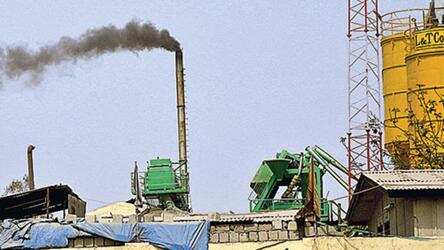Carbon emission has been exceeding in higher intolerable concentration ever since the industrial revolution brought with it massive emissions from the combustion of fossil fuels-coal and oil. It merely follows the steps taken to control the carbon footprint. People believe that by controlling the release of carbon- it will help, but that is just a way of putting it up slowly. Though, 2020 has come up with a ray of hope with carbon emission-reducing across the globe.
This year carbon emissions are set to decline at a high rate. The decline is calculated twice the previous declines since the end of world war 2 – states the International Energy Agency (IEA) in their report of global energy review 2020. They also expect that the rebound will be larger than the decline post-pandemic.
China’s emissions have decreased by about a quarter in February. Every winter during the Chinese new year, the country closes for a week. It is at this time of the year that the emissions drastically reduce. This year the reduction in consumption and production of coal and crude oil has estimated -25% or more reduction in carbon emissions compared to the Chinese new year period of last year. One exception is the steel production which kept running through new year and holidays. Beijing experienced its second severe smog episode of the year in February. Even when no cars were on the road, and most businesses were shut down, people wondered where the smog came from. As explained about the vital sector, China considers- its steel production- the steel blast furnaces kept running through the pandemic, and other power plants only shut down a part of their boilers at most.
Europe commission adopted a strategic long-term vision for the climate-neutral economy by 2050. To do so, the EU focused on greenhouse gases. The European Union’s greenhouse gas emissions covered by the carbon market will fall by 15% this year up from 6% last year.
As per the European Environment Agency, air pollution and heatwaves exacerbated by climate change contribute to around 13% of all deaths in Europe. The EU targets to make agriculture more sustainable by ring-fencing natural habitats and curbing pesticide use, although farming groups have warned the goals could curb crop yields.
European climate policies have contributed to reduced emission levels, primarily through introducing renewable energies and energy efficiency policies.
Greenhouse gas emissions in the US fell 18% below last year’s level in the three months ending June 15, reflecting an economy sharply hobbled by the COVID-19 pandemic. Solar- and-wind-powered electricity for the first time surpassed coal-fired plants, which saw 30% lower production at the quarantine the peak in April. Industrial companies, including metals, chemicals, cement and paper, are projected to become the highest emitters in the next six years as they tap the US enormous stores of gas and oil.
Driven by corporate and fossil fuel interests replete among his cabinet and top donors, President Donald Trump has been undermining protections against air pollution. This decision is causing direct harm to clean energy industries and jobs, abandoning the Paris climate agreement, and putting the profits of fossil fuel corporations over the health of people and the planet. US federal climate policy is moving in precisely the wrong direction.
After years of decline, the US energy consumption hit a record high last year. The rebound state will be ghastly dangerous for the US India’s lockdown — one of the world’s most stringent. By one estimate, India’s carbon dioxide emissions fell by 30 per cent in April compared with the same month in 2019. The restrictions of lockdown are now uplifting, as the economic balance is highly disturbed.
For India-per-person carbon footprint comes at rank 140 – right after China and America.
India is the third-largest carbon-emitting country in the world. Emissions in India grew by 1.8 per cent in 2019, at a slower pace than in 2018. Right after the lockdown, images of the cloudless morning in the capital of India – Delhi were everywhere on social media. As lockdown uplifted, the smoggy mornings returned. This is the very example of rebounding phase.
Written by: Kosha Naik

